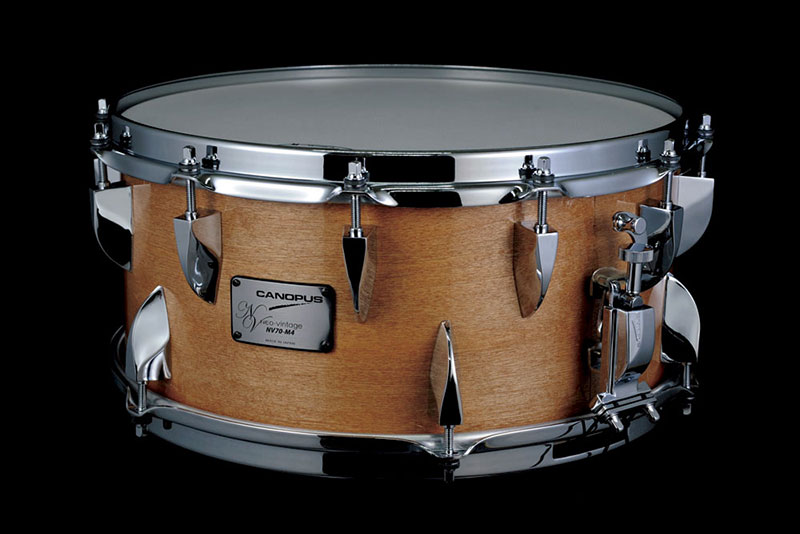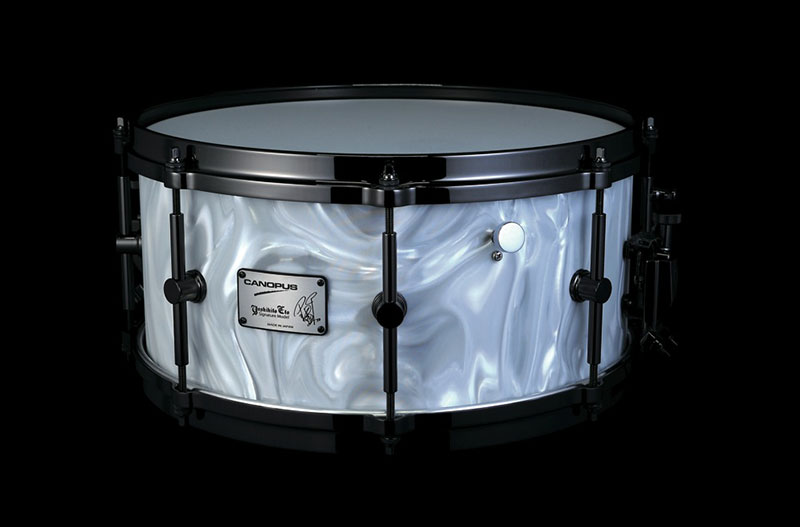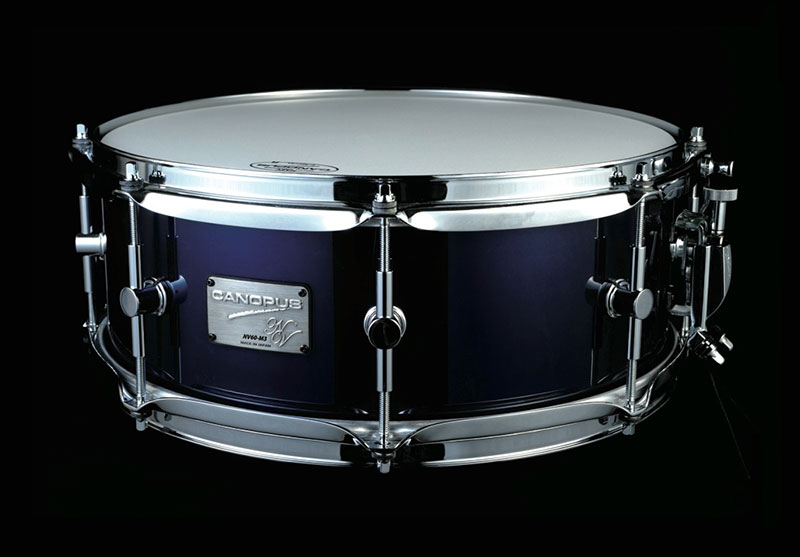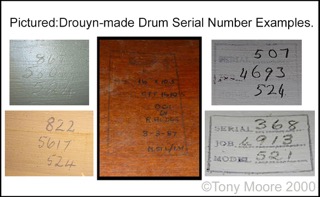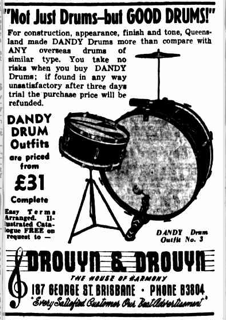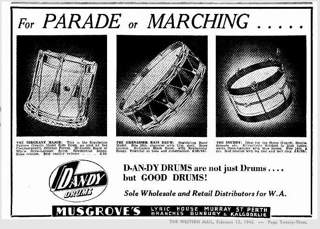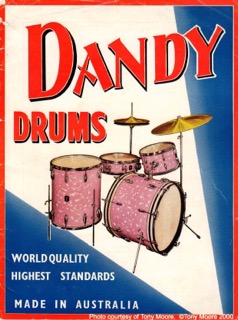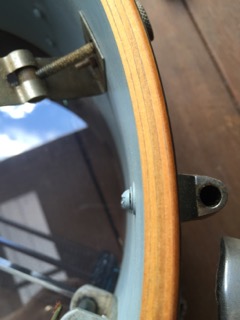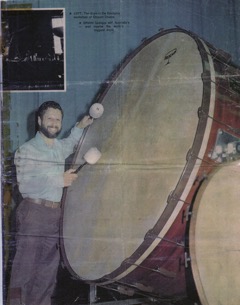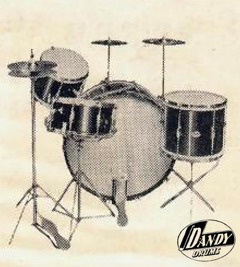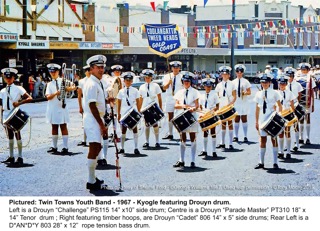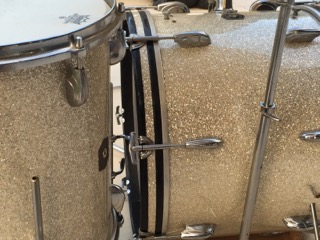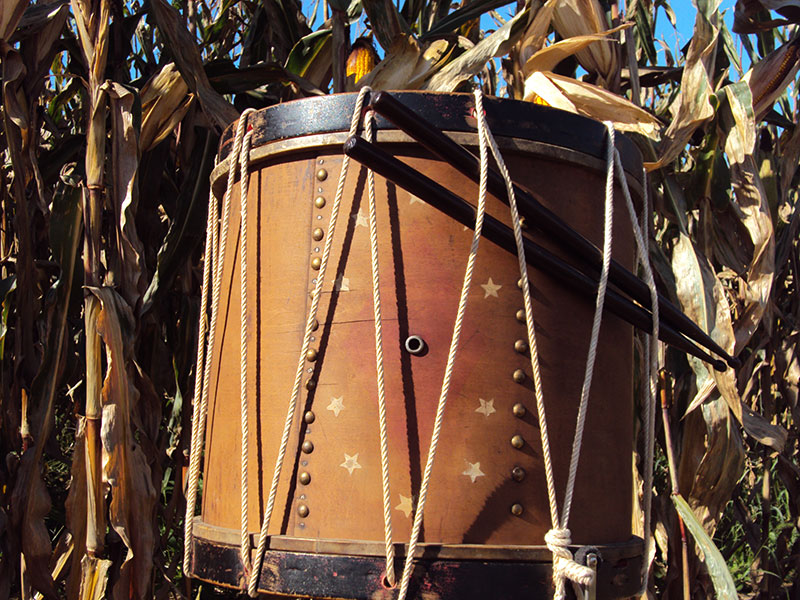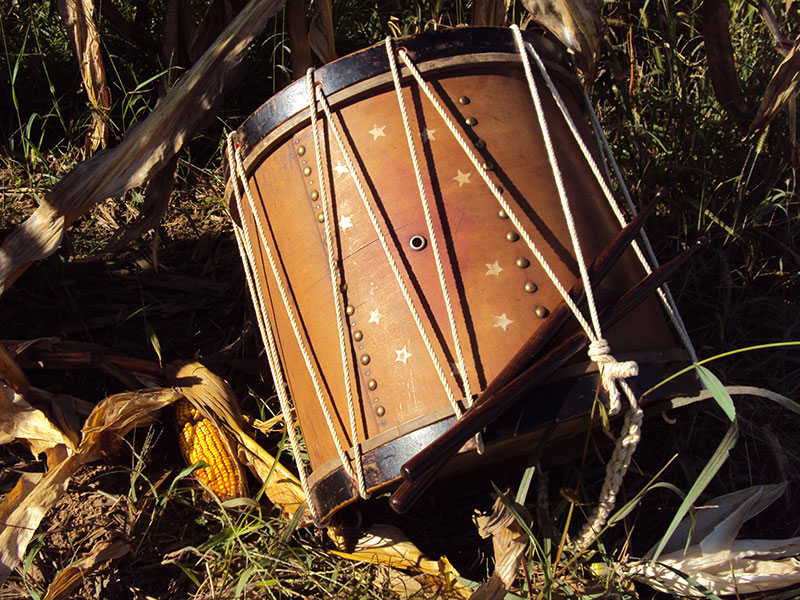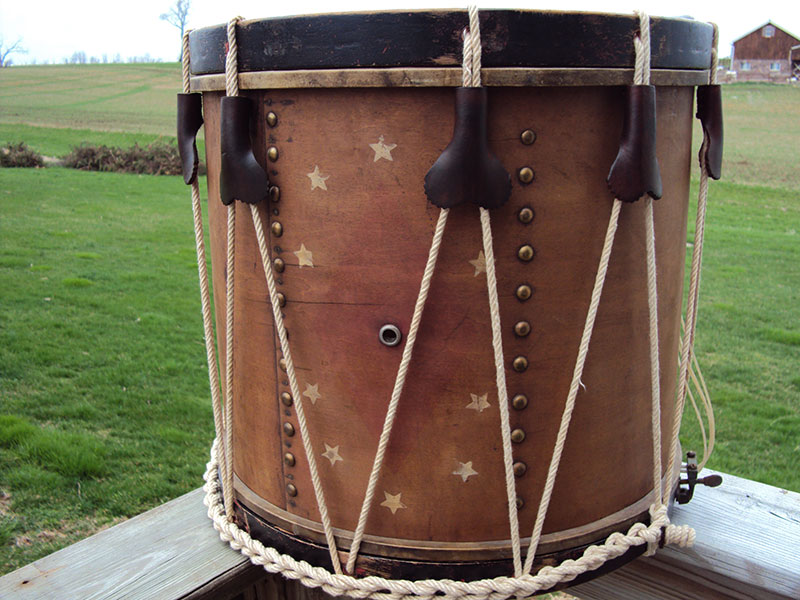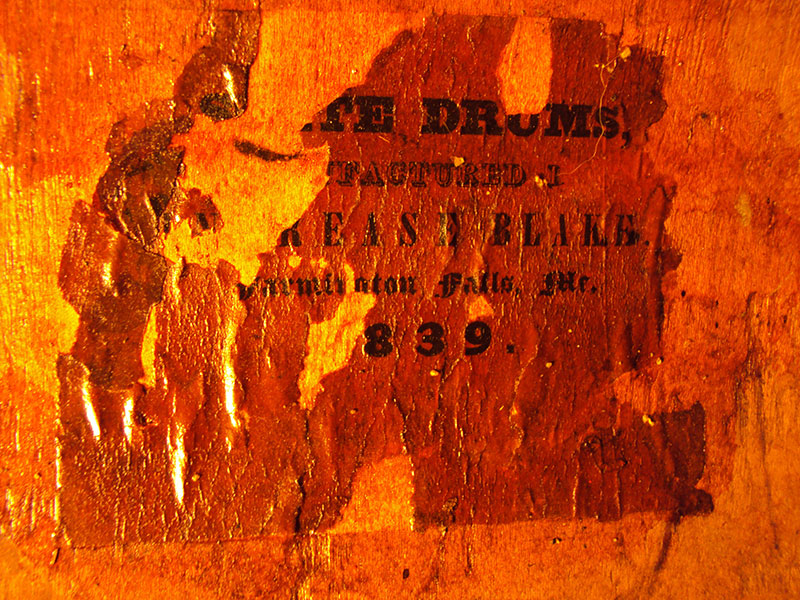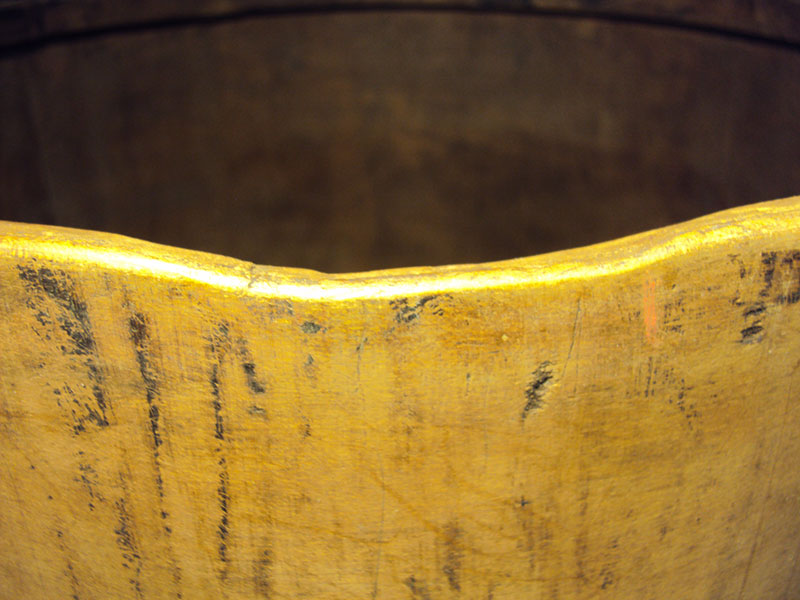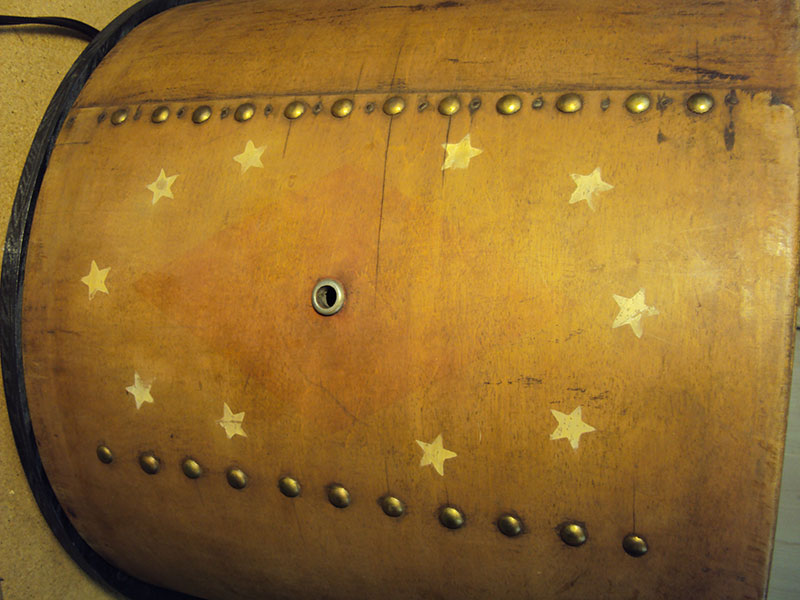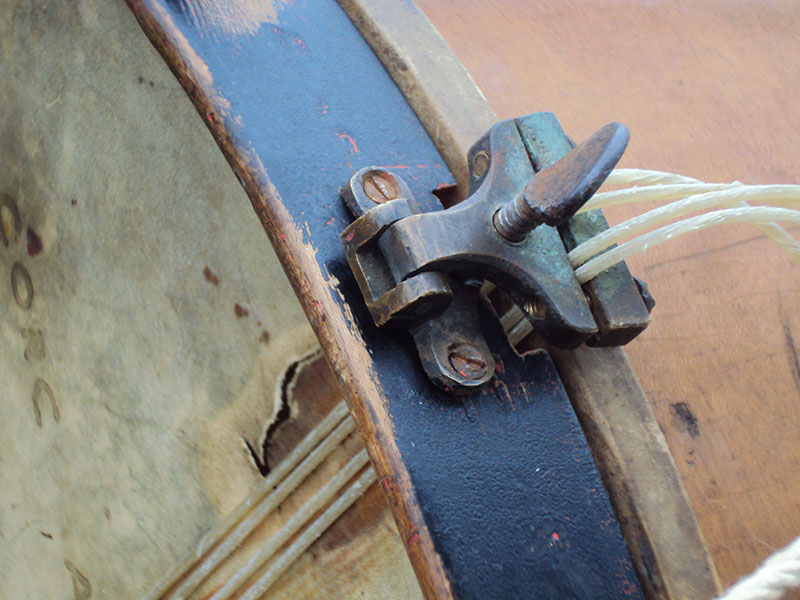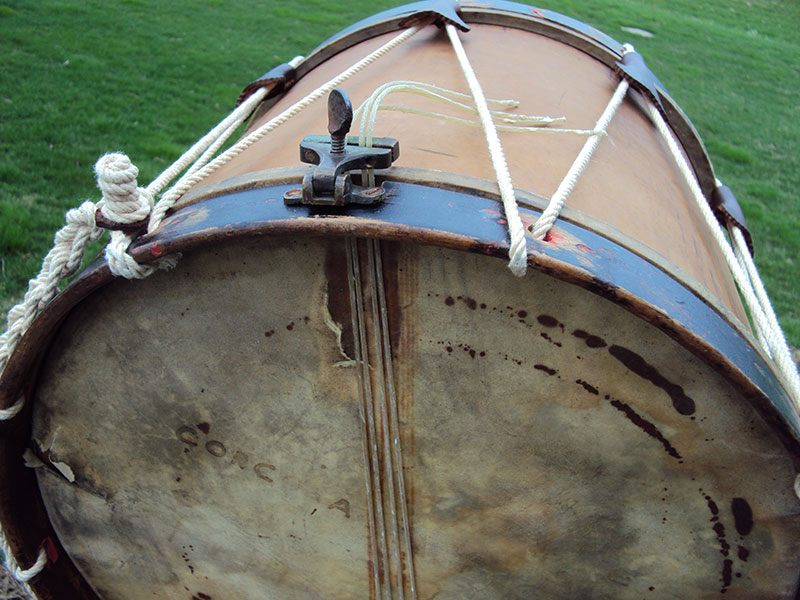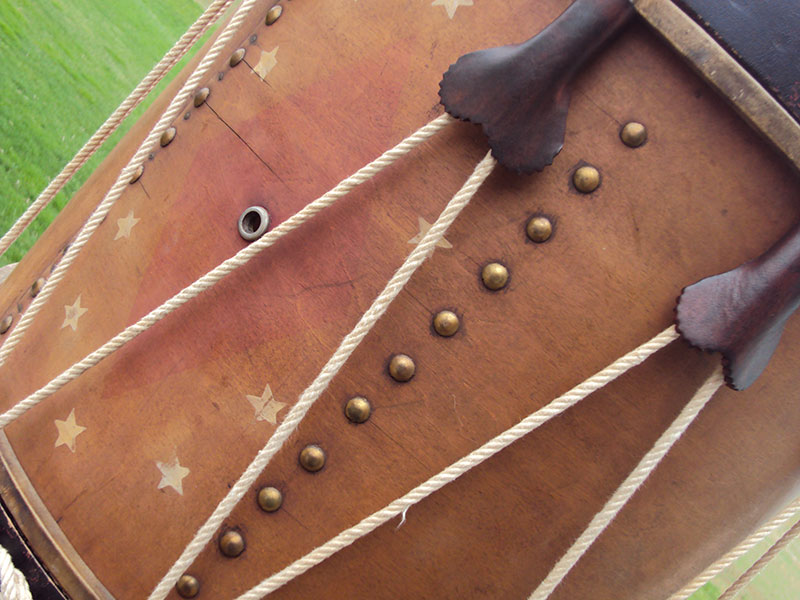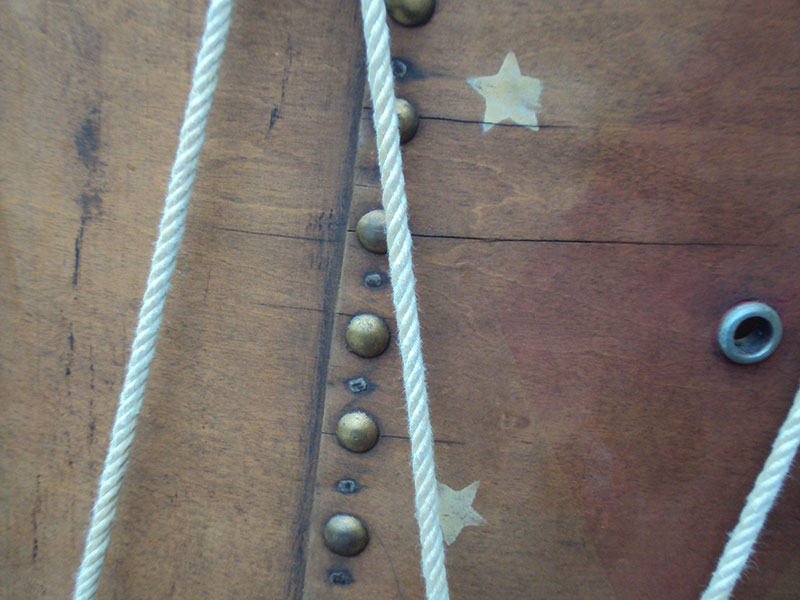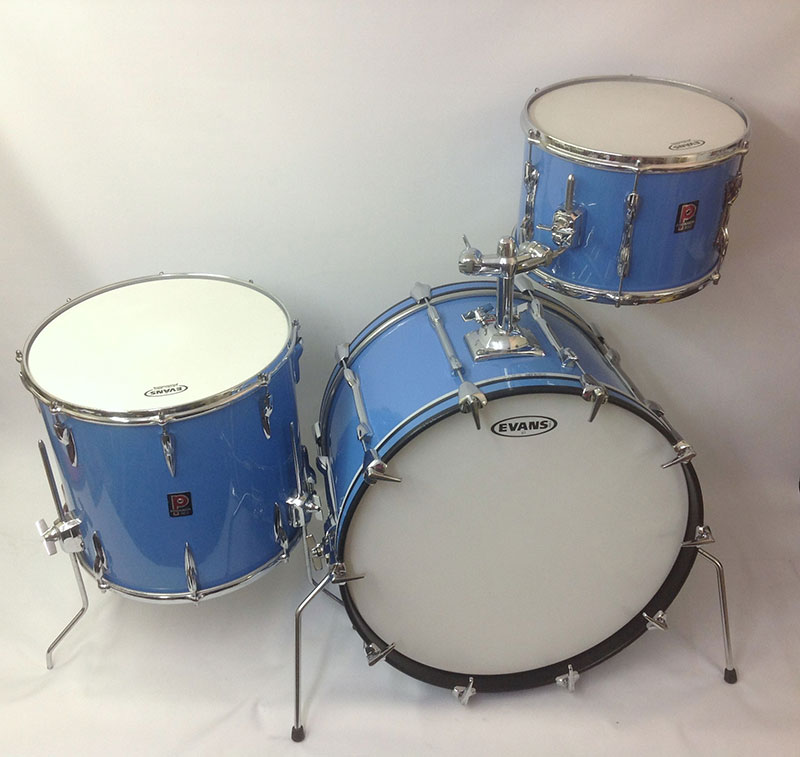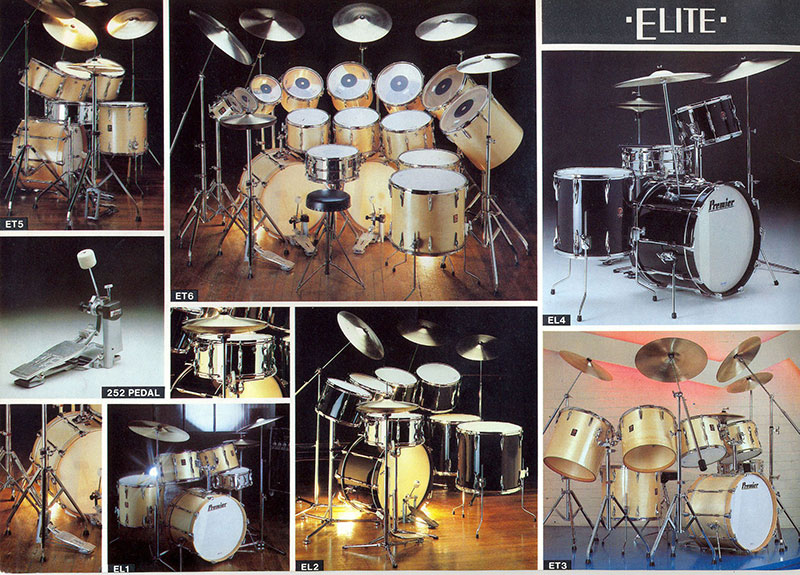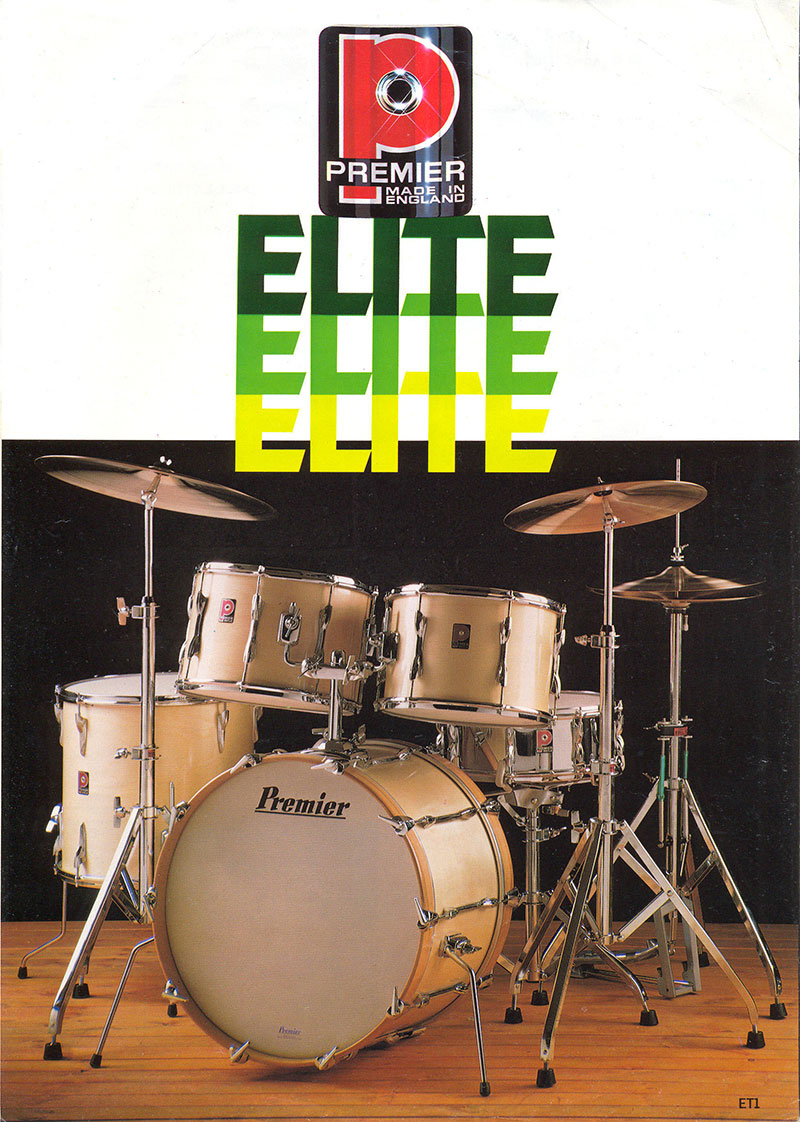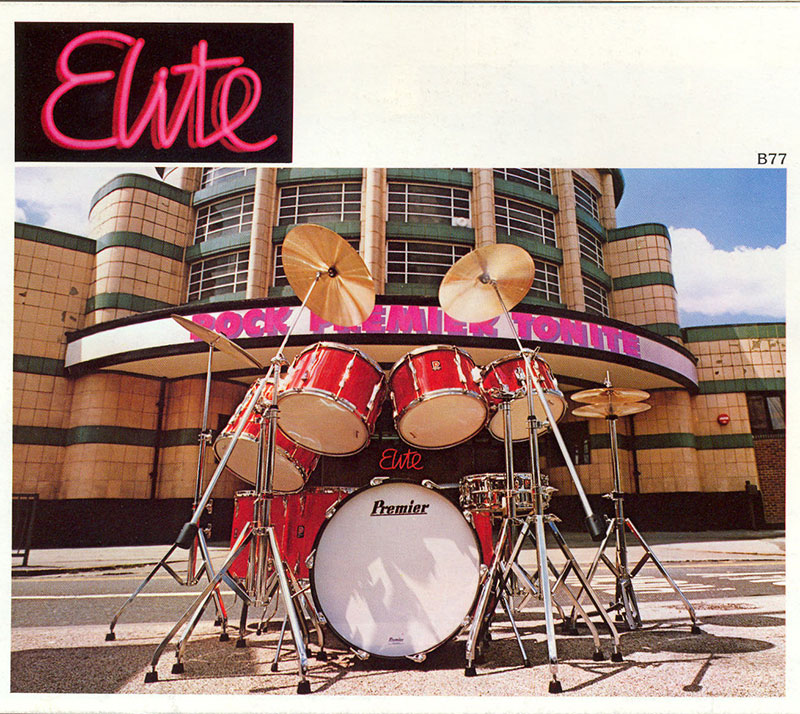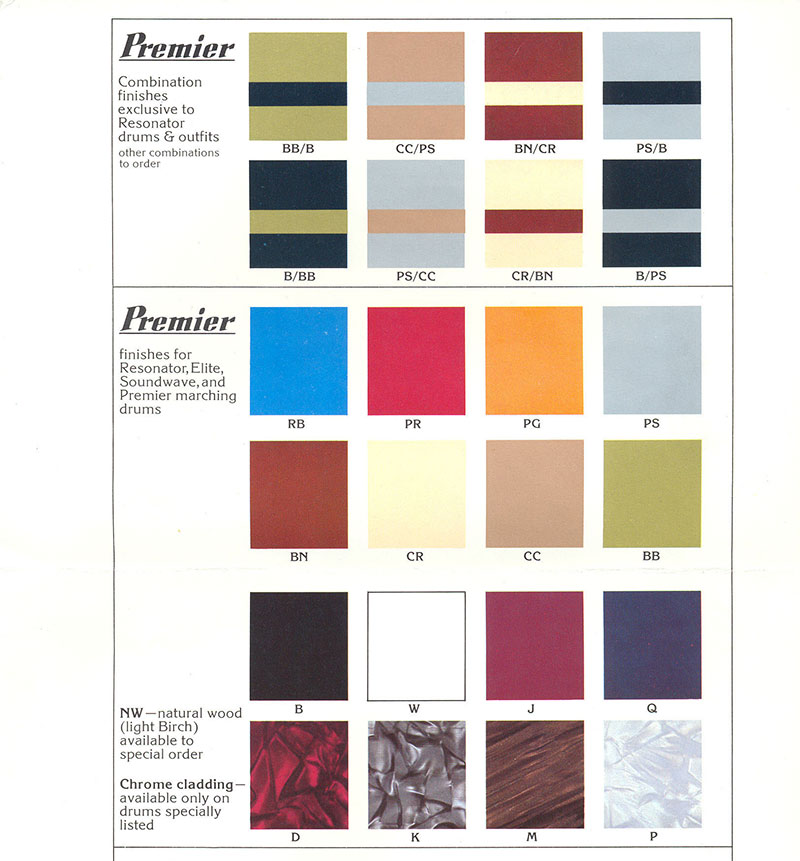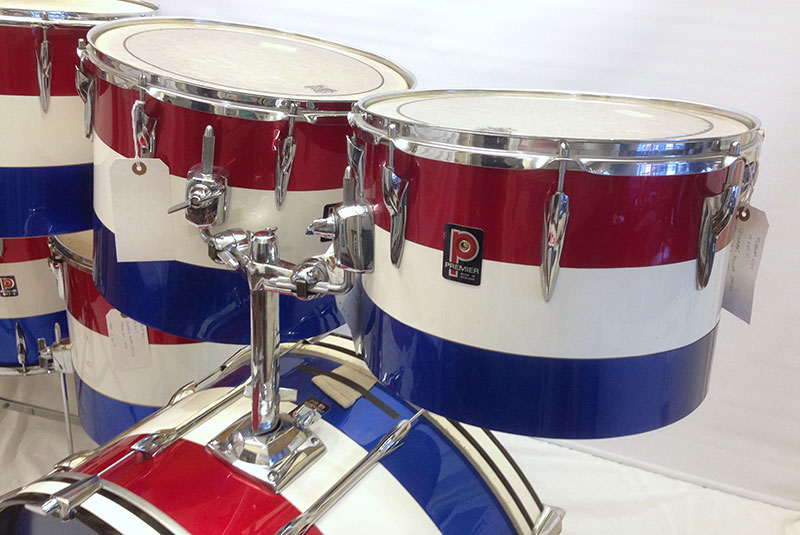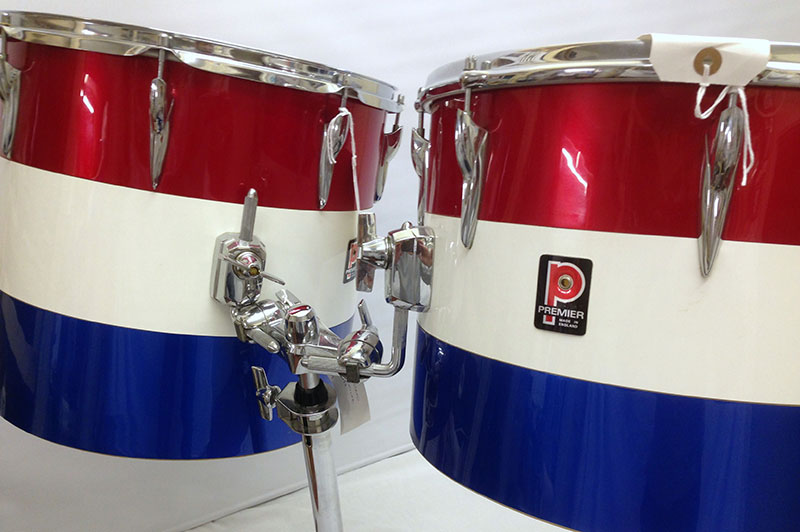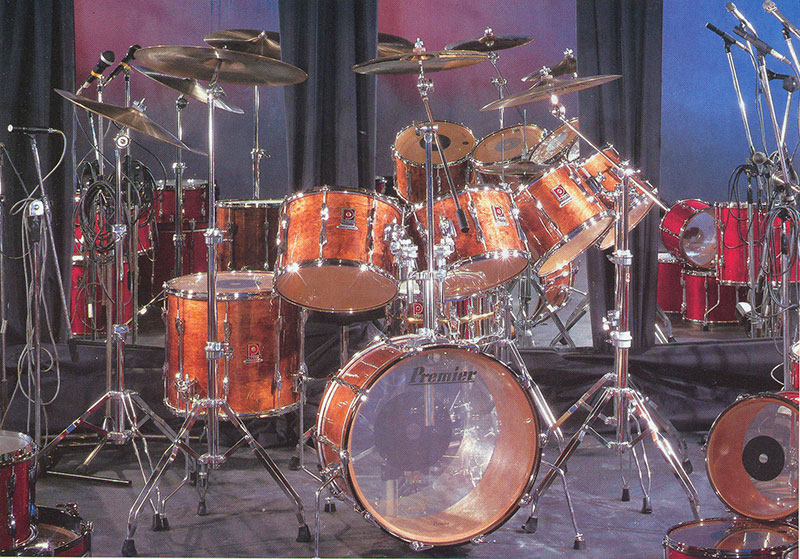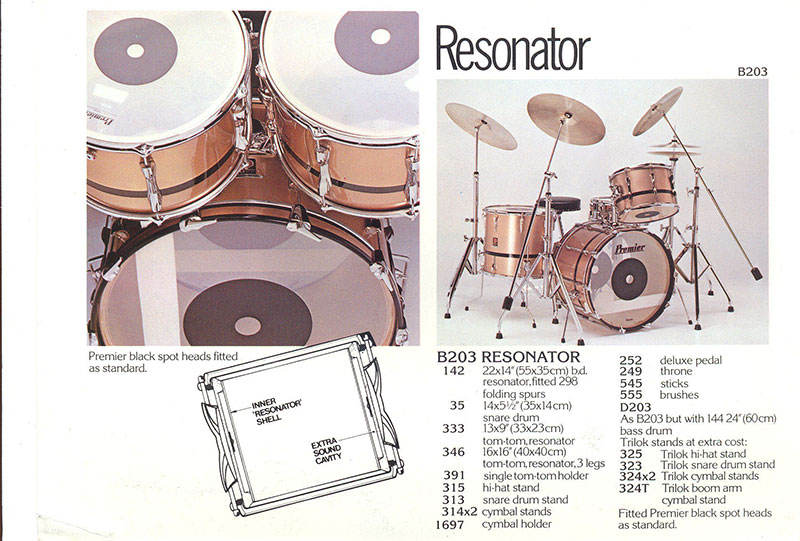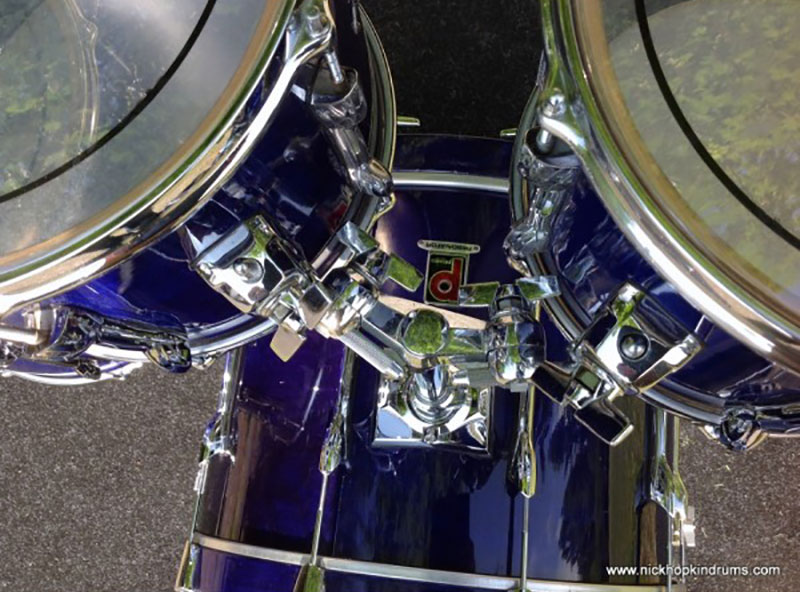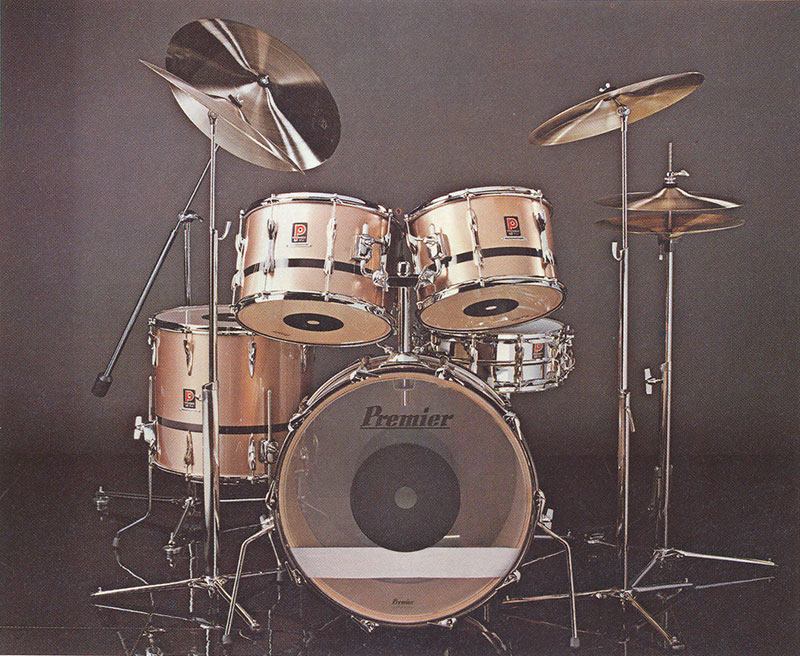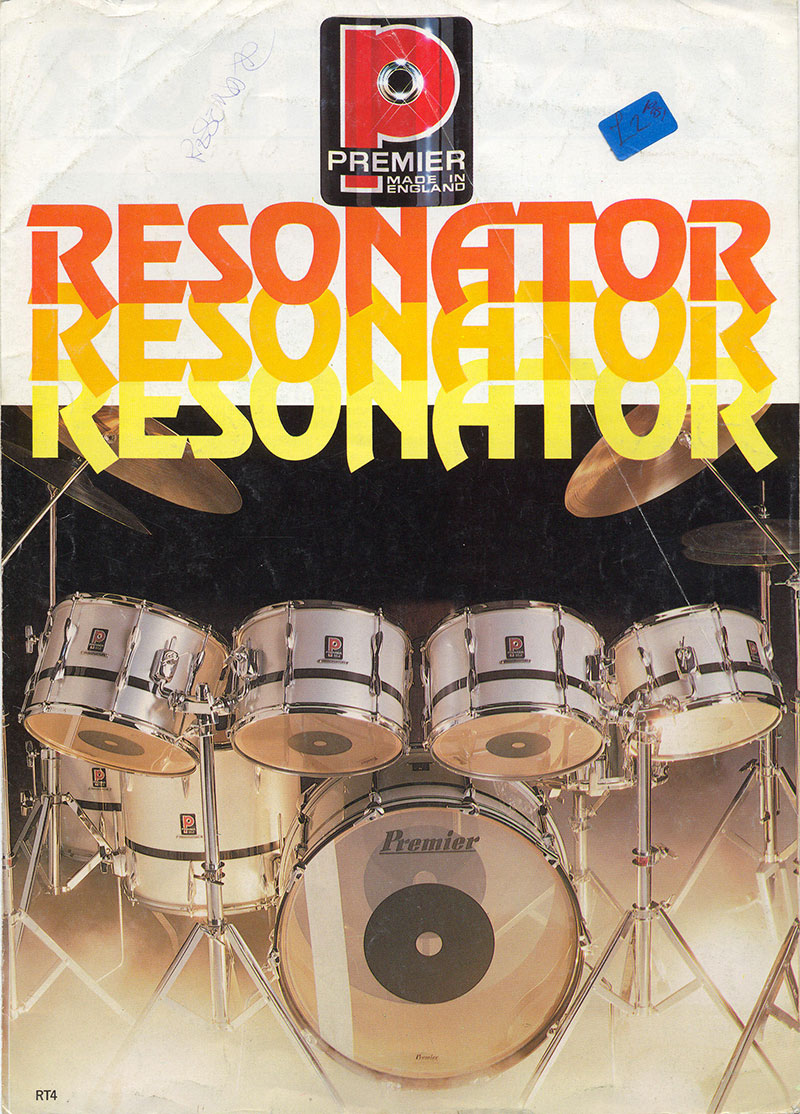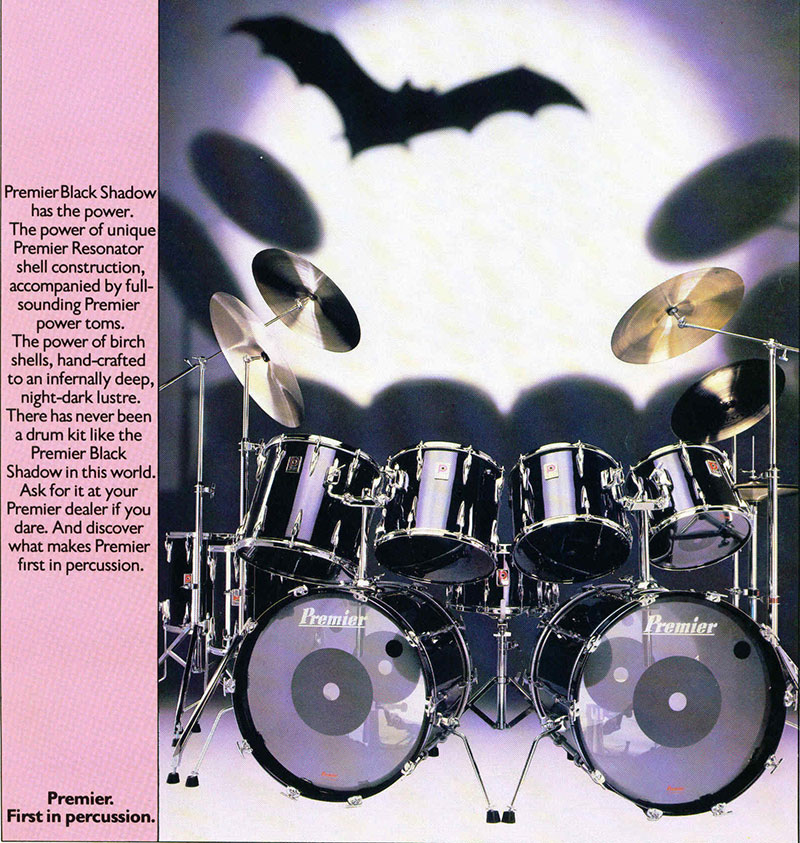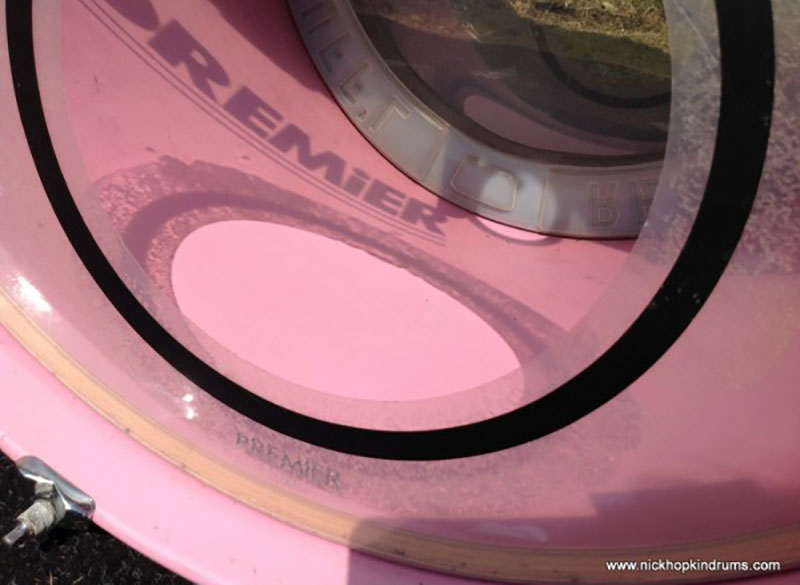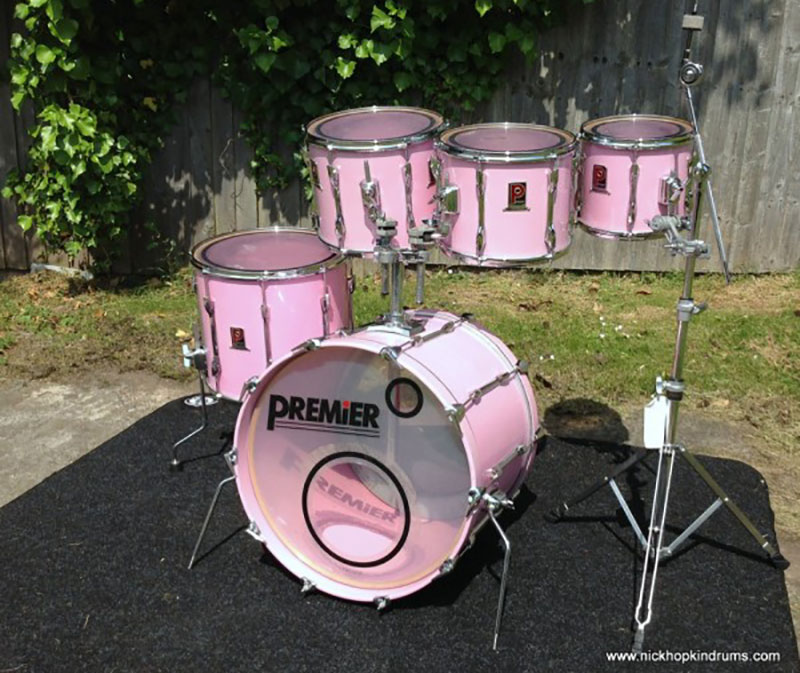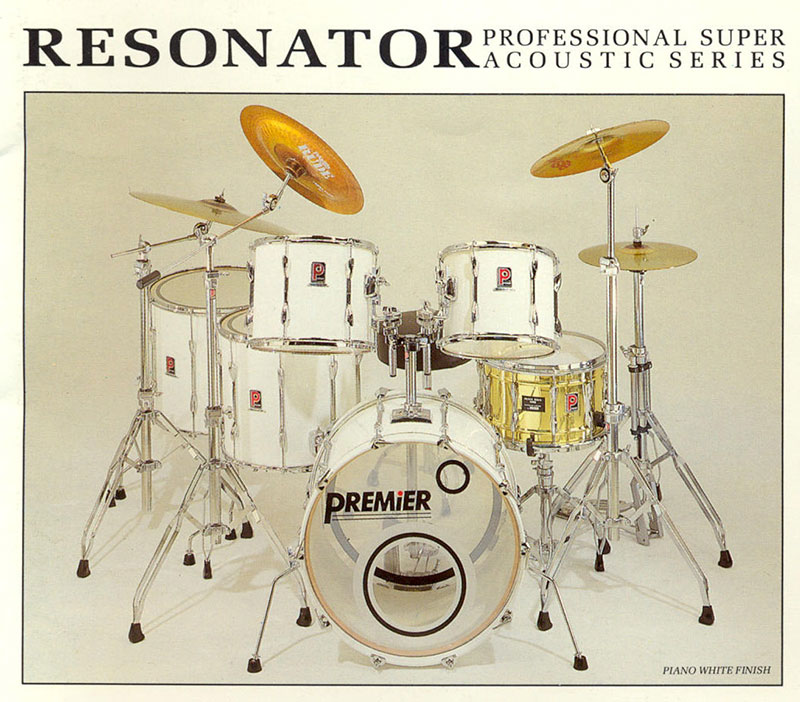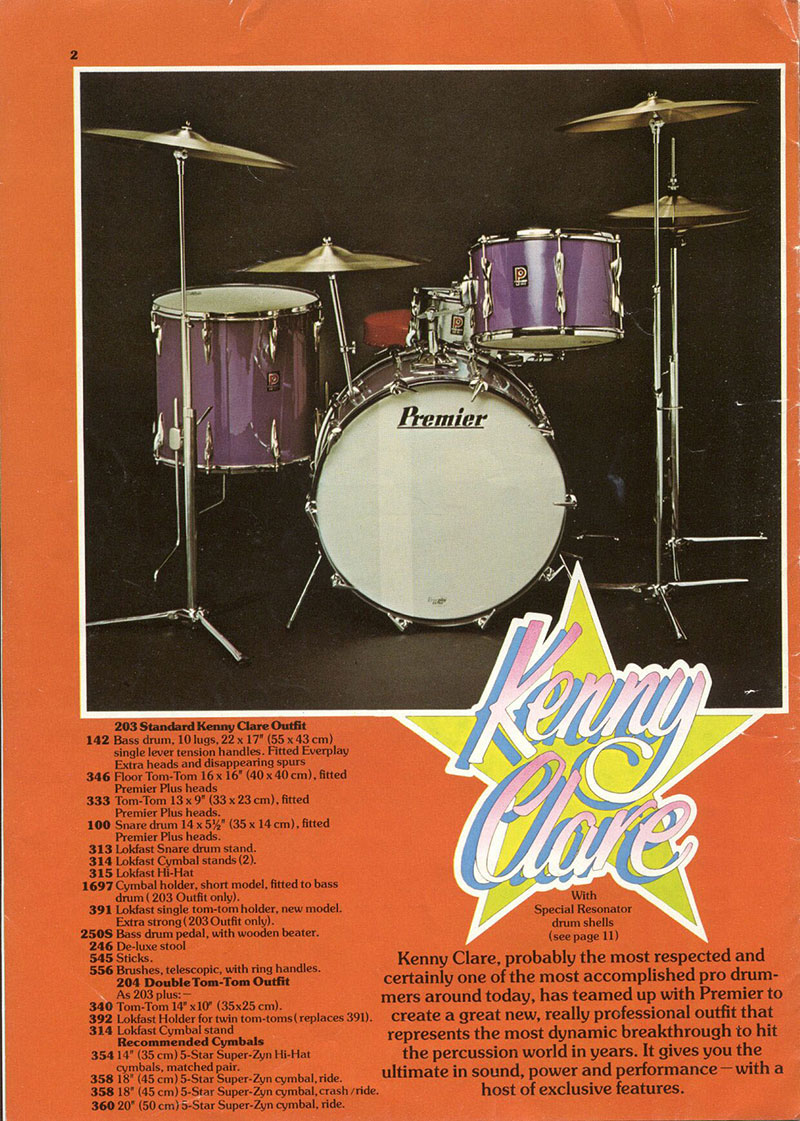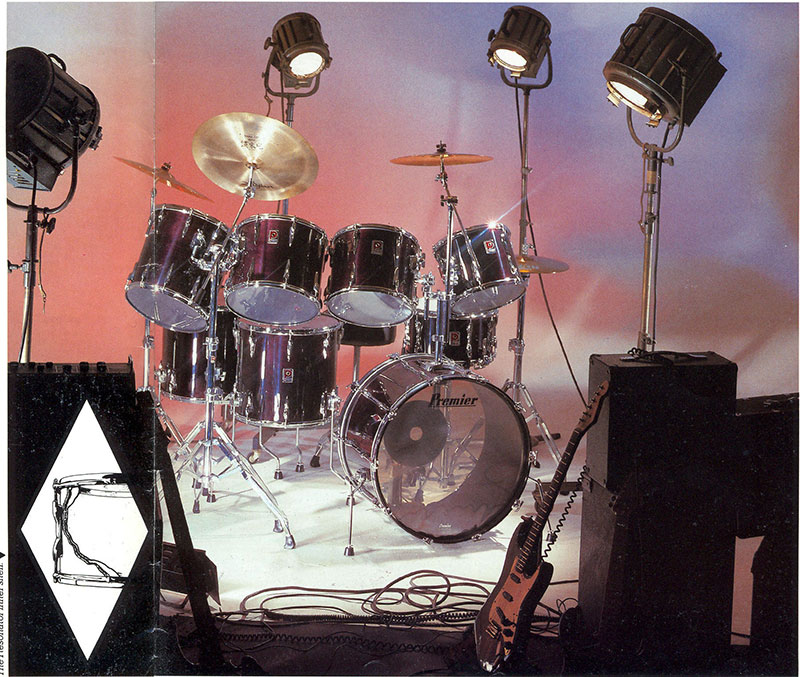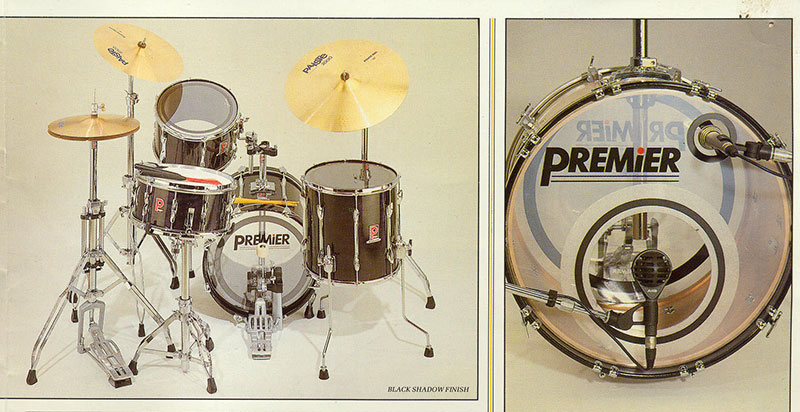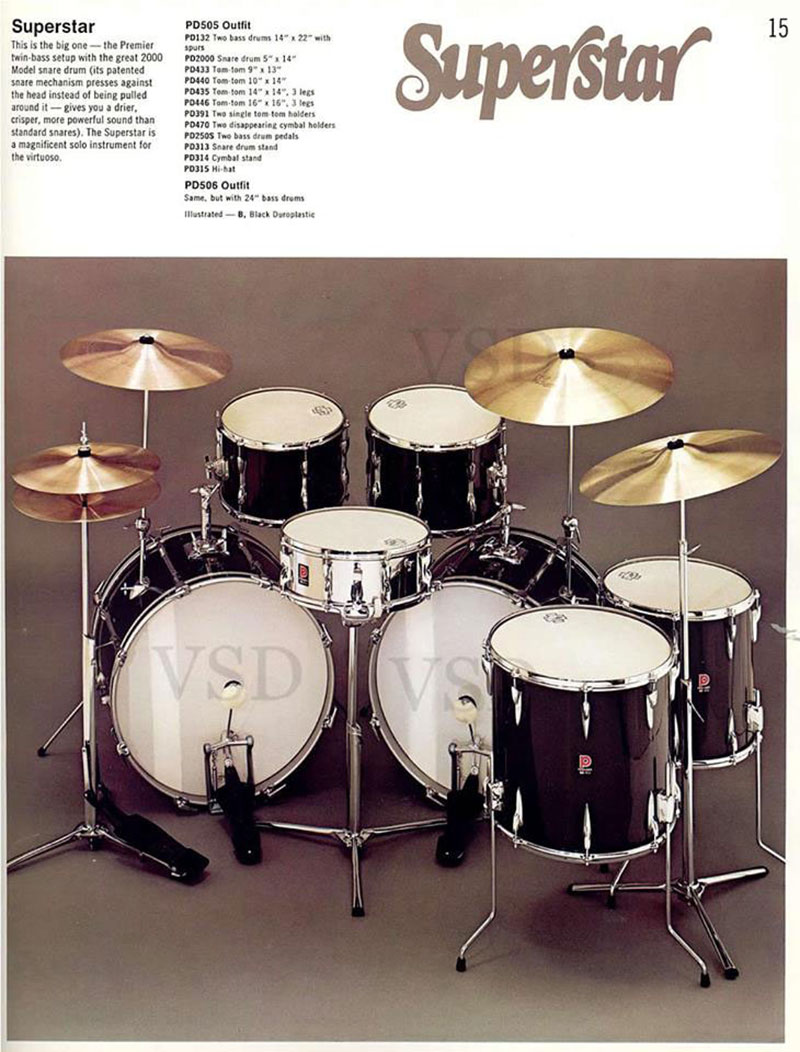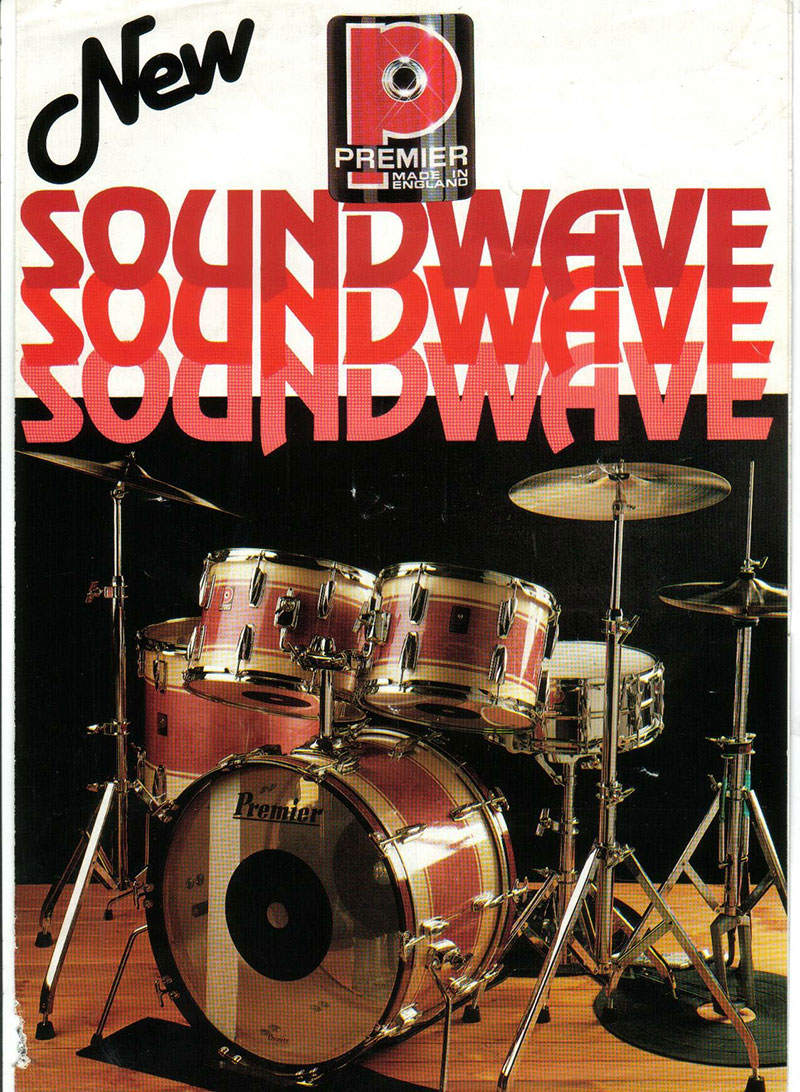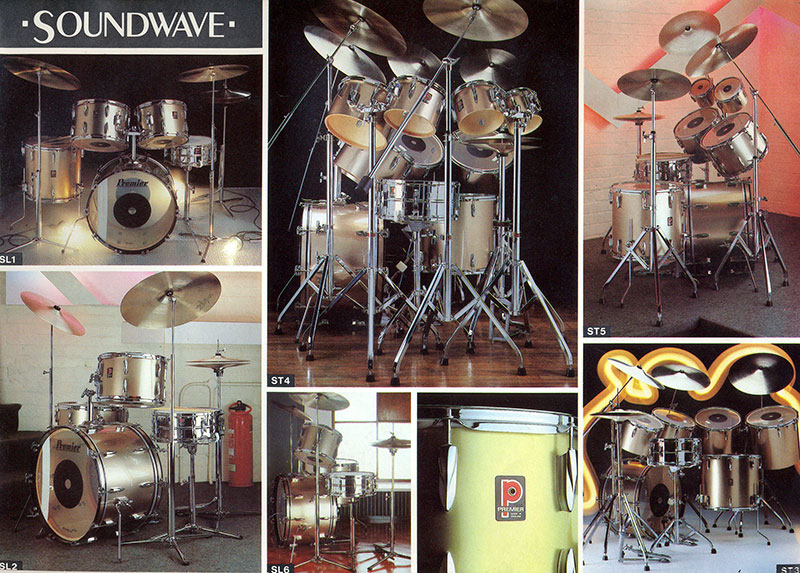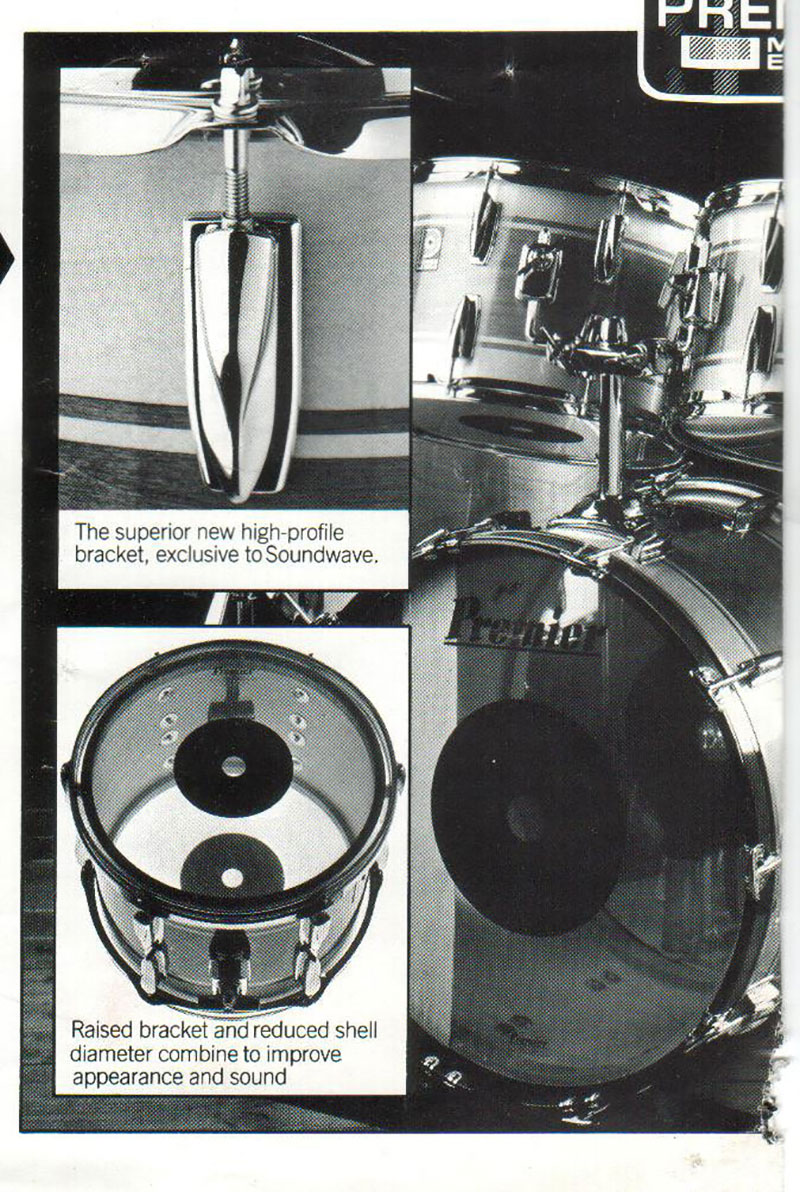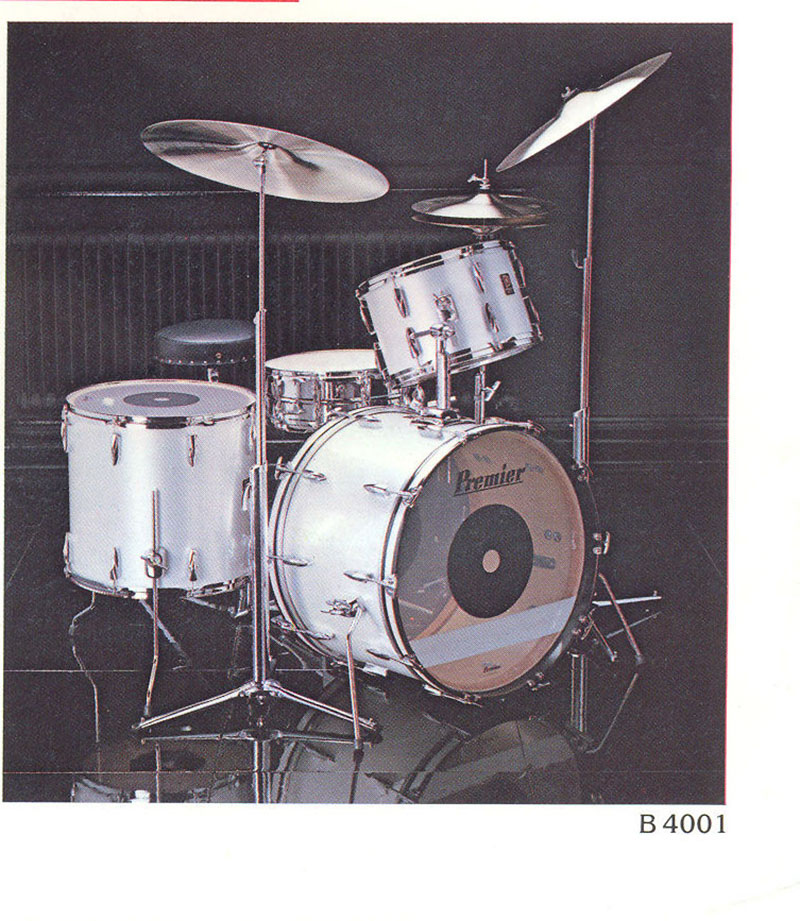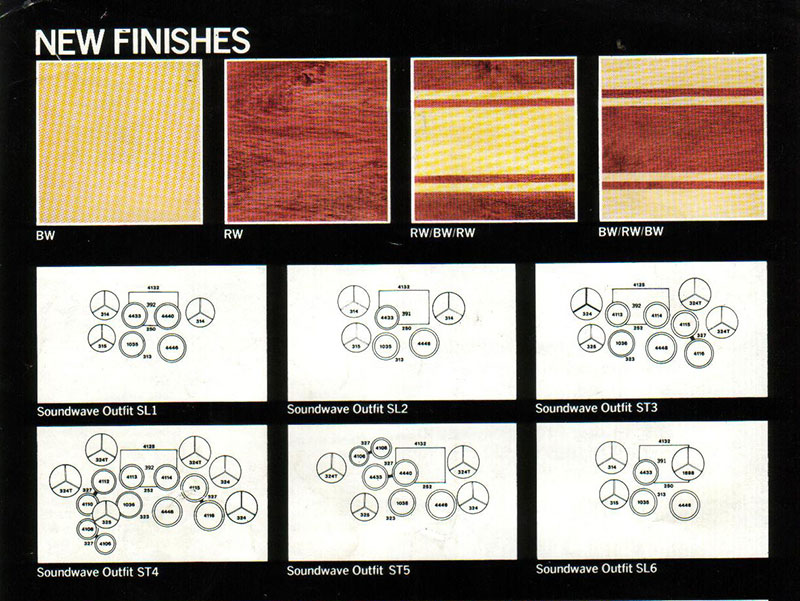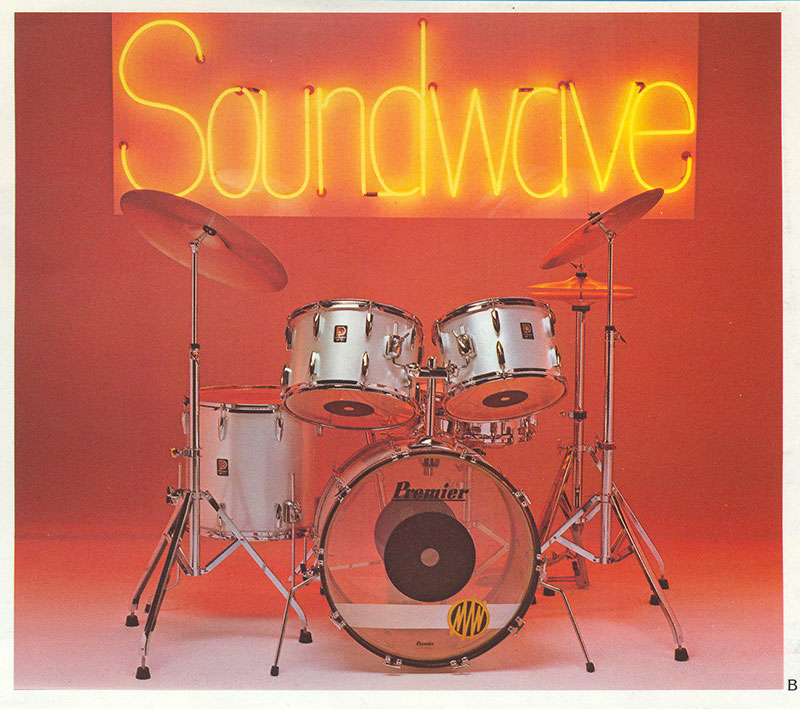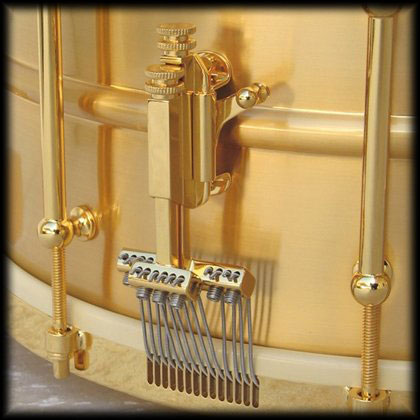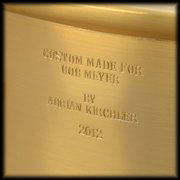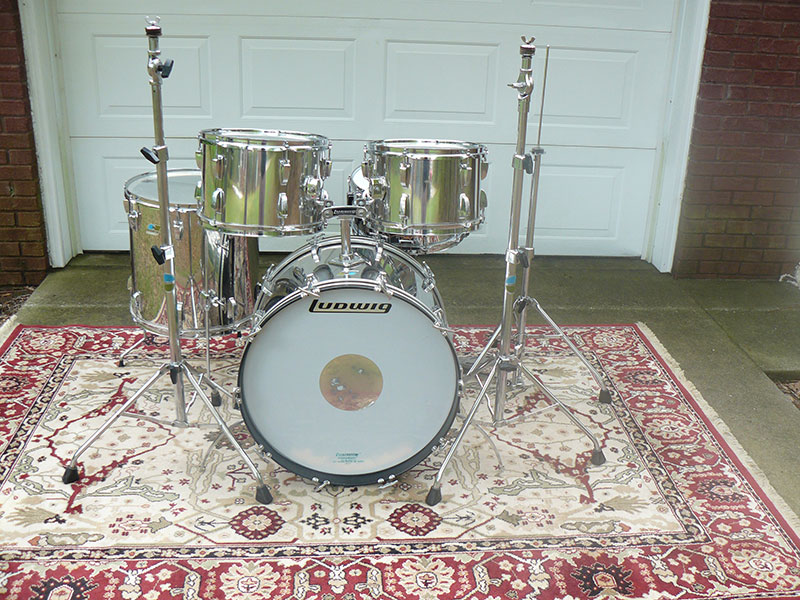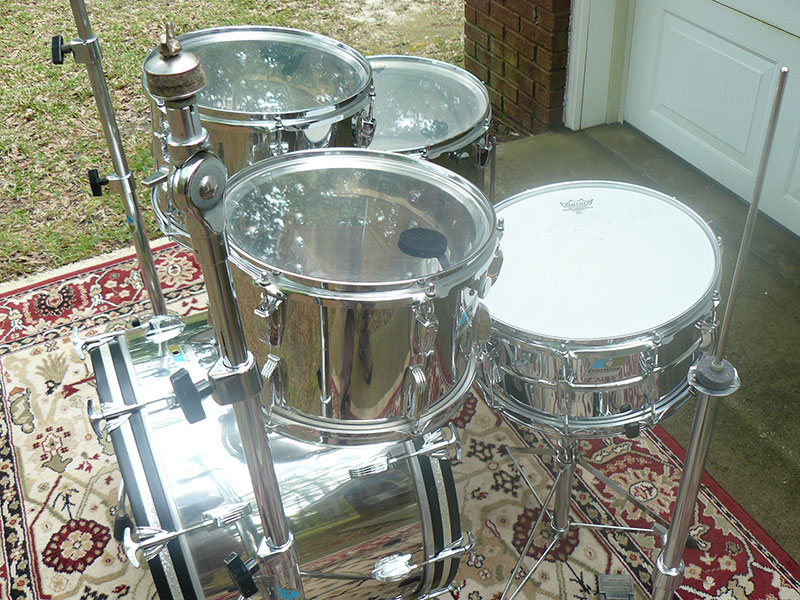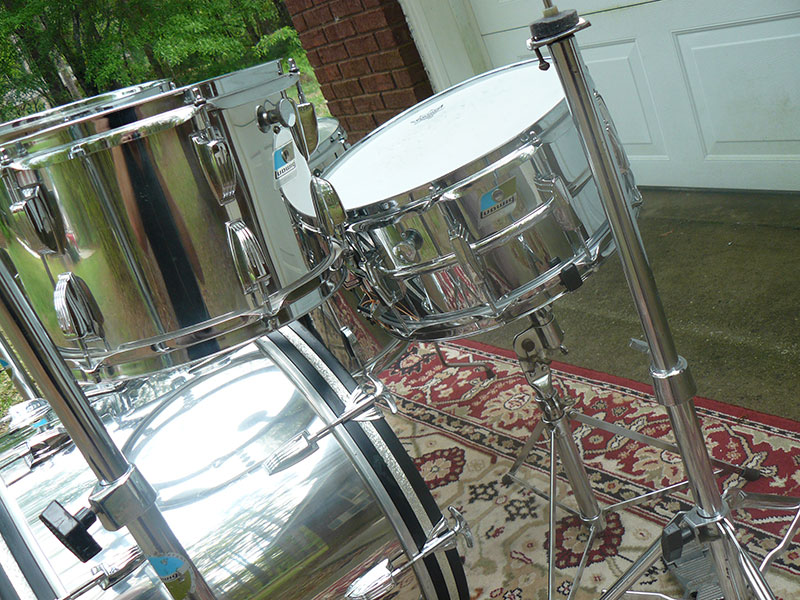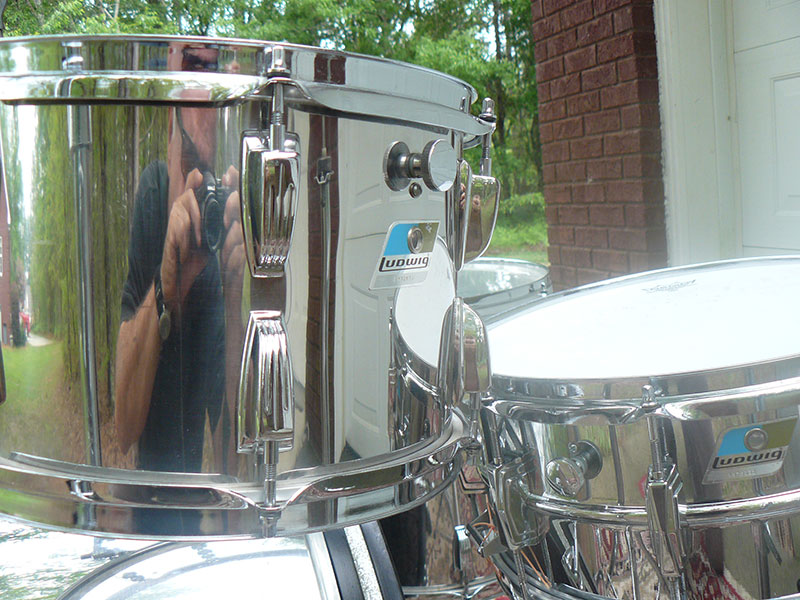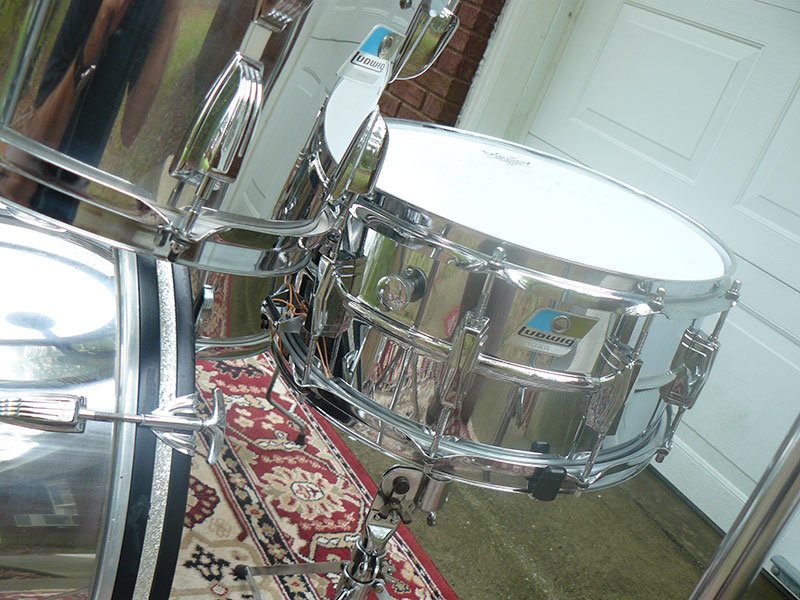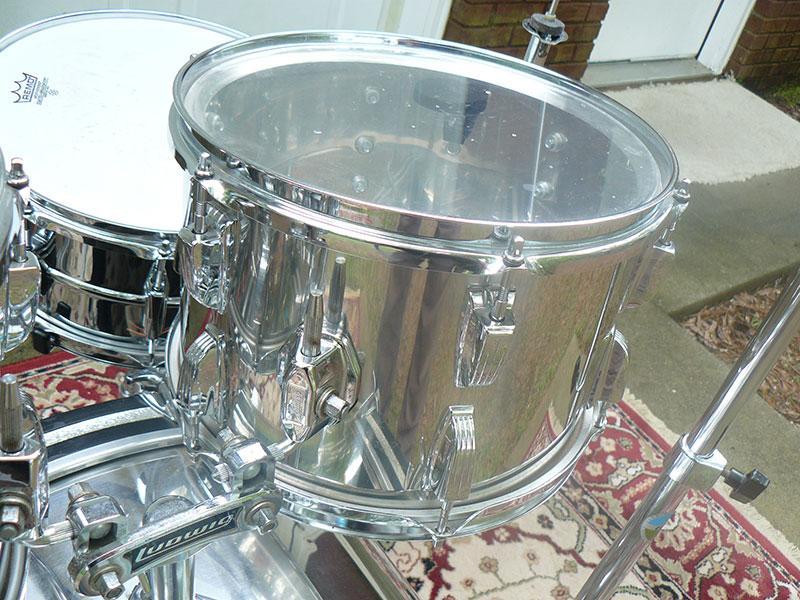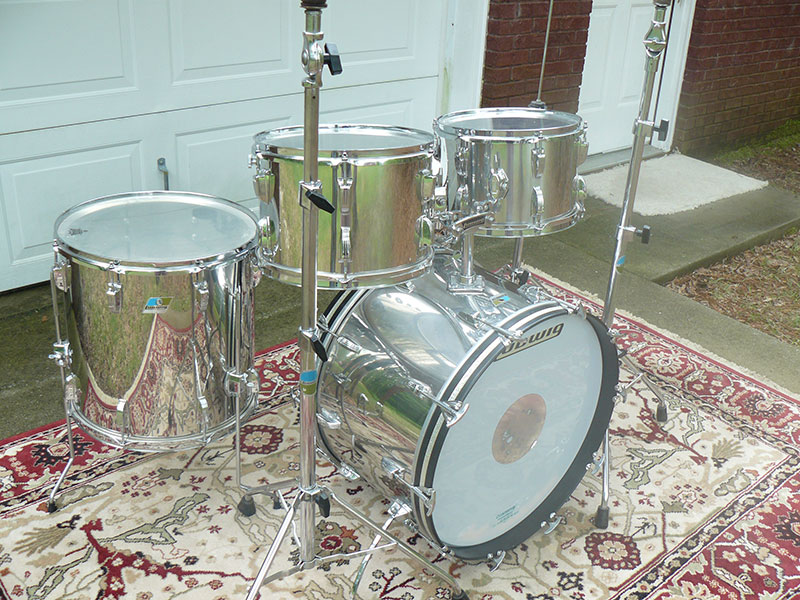Numbering, or serial numbers came later for Drouyn. As manufacturing transitioned from ad hoc or demand based to more intentional marketed drum manufacturing, these processes required serial numbers for tracking through the manufacturing process and also for department stores and retailers to receive and stock take Dandy items.
In brief, both the pre-paper badge and the paper badge drums were often made from a new (at the time) product called masonite. Masonite is a reconstituted fibrous hardwood sheet-based product, which 50 years later would be used by Premier in their XPK kits. Ironically, Masonite, like Remo’s Acousticon, has great acoustic properties and adds both economical and tonal value to it use.
These early Drouyn masonite drums were generally fitted with steam bent reinforcement rings of varying local timbers and utilized a rope and tag, or DIY styled post and rail lug tension systems, or hoop to hoop tuning. These systems and tension assemblies were very similar to Leedy's drums of that period. All drums had steam bent wood hoops, and in house fabricated brass soldered metal components which were nickel plated and fastened with off the shelf whitworth fasteners and washers.
The shell finish was a hand painted finish, similar to enamel paint with the hoops more ornate or regal in appearance. A paper badge was fixed with glue and shellacked over to finish. Drums were fitted with calf or kangaroo skin heads, lapped in house and tuned prior to dispatch.
Drouyn's pre-paper badge history is extensive and difficult to excavate. Their paper-badge history was relatively short, for with increasing sales and growth came opportunities to build purpose built machinery and add other touches such as brass name plates.
The Roaring Forties - When the Drums Began to Bloom
This period from the mid 1940s and to the late 1950s marks a point in Drouyn's history where Drouyn & Drouyn's Music House transitioned from musical instrument servicing, piano tuning and repairs, retailer - of even radios - to drum products manufacturing giant.
One advertisement states:
“Not Just Drums-but GOOD DRUMS!”.
It highlights their growth and advancement from earlier paper-badge drum tensioning systems to something more intentional. In doing this, Doug and Dorothy nailed their flag to the mast and said:
WE MAKE DRUMS - GOOD DRUMS
It was this intentional focus that would open the next door towards success.
A Drum - by another name - is still a Drouyn: Allans, Suttons, DANDY, Stradivarius, Nicholson and Drouyn.
As exclusive Australian importers and distributers of many musical products, Doug and Dorothy had developed supply channels with Australia’s retail giants, such as:
- Australia’s oldest music retailer Allans Music – Melbourne Victoria established in 1850 by Joseph Wilkie and George Allan;
- Suttons Music Store - Ballarat Victoria, established in 1884 by Alfred Sutton;
- The Stradivarius Instrument Co. - Adelaide, South Australia; and
- Nicholson & Co. - Melbourne, Sydney, Brisbane & Perth, which was established in 1878.
Drouyn’s reputation for quality and sound, had established DANDY drums as a clear leader.
With a solid product and increasing demand and respect from drummers, these major retailers and speciality musical instrument suppliers commissioned Drouyn and Drouyn to manufacture DANDY drums under their own respective trading names and brand.
Pictured are nine of the known badges that Drouyn & Co. manufactured under. So with much badge confusion, it had been a long held puzzle how these different brands fit into the Drouyn story - if they were related or belonged at all.
In brief, all of the above drums, regardless of badge, were identical in manufacture, both inside and out, with only the badge changing. This was a great business concept because with every Drouyn made drum sold, regardless of the badge, their lug design, sound and classic look built the brand name Drouyn & Drouyn.
So yes! the numbers have it, all nine of the drums pictured were manufactured by Drouyn between 1929 and 1990, including the pre-paper badge or badgeless drums.
Drouyn's Serial Numbers Theory. Do the numbers have it?
There are many mysteries, beliefs and theories about Drouyn drums. It appears that whenever there is an absence of information, we tend to want to fill it with a story or try to make sense of it. Instead of just letting the drums speak for themselves we tend to speak on their behalf. I have been researching, gathering and analysing this material over the last twenty years, and the drums are beginning to speak.
With out giving the plot away, the numbers (from top to bottom) simply mean: Serial, Job and Model. The most popular belief, is that the first two numbers of the Job number, which is the middle set of numbers, reflects the year of manufacture. So, 5801 would be manufactured in 1958; the 5617 would be 1956; and so on.
Records indicate that Drouyn used the same stamping system from the 1950s until the 1980s, when a new stamp was suddenly introduced. Shown is the stamp of a drum made in March 1987, which was only 23 months before Drouyn and Co. was deregistered. You can see that a new stamp was used, and has the following titles under the 1965 Drouyn snare drum and stand logo at top:
• SIZE
• MODEL
• SERIAL No
• VENEER
• DATE
• OFFICIALS (though not sure)
It is a cue, although subtle, which indicates indecisiveness and a lack of the same confidence that saw Drouyn drums roaring in the forties, flying in the fifties and swing in the early sixties. Late adoption of new manufacturing systems, few new products or product advancements, poor management and no succession plan to replace the aging and retiring highly experienced drum makers was uncharacteristically Drouyn. This gives clue to factors that will later prove to be the determinants that lead to the slow drawn out death of the Drouyn & Co. But first, let’s celebrate the swinging sixties.
All Systems are Go!
The early sixties marked a great year in Drouyn’s history. Following the loss of his much loved sister Dorothy in 1954, Doug took some time to refocus. The success of the Dandy paper-badge drums in the 40s and early 50s had given Doug the means to grow the business, to change with the times and seek out new opportunities.
The establishment of Drouyn House, aka the Drouyn Drum Factory, at 382 Logan Rd, Stones Corner Queensland was the most significant investment in success as it gave the Drouyn team the ability to make high quality drums more efficiently. The tightly packed factory was a hive of manufacturing and production activities as this Australian Drum Making marketing depicts.
Steered by the guarantee of Doug and Dorothy in the early days - their business brand DANDY, was always built on style, world-class quality and sound, but also the belief that “...every satisfied customer, is our best advertisement.”
In 1958, Drouyn & Co. Pty Ltd. was registered as a company - a decision that would prove essential to secure later lucrative government contracts - and saw the way forward. From the mid 50s the brass plate DANDY drums had carved a niche and proved world class by famous Australian drumming greats and visiting drummers. So it was time for Drouyn to declare it and to let the world know about DANDY drums.
In 1960, Drouyn and Drouyn released their DANDY DRUMS catalogue, a twenty page catalogue featuring four snare drum models, four bass drum models, nine floor tom and tom tom, models including timbales, concert toms and bongos, thirty eight accessories and hardware items, all made in-house.
What is most remarkable about Drouyn’s DANDY drums catalogue, is that almost 98% of these items were made within the four walls of their Stones Corner factory. Vellums were lapped, lugs cast, hardware made, tension rods, fittings, stands, snare wires, pedals, springs, hoops, wood blocks, claves, felts - almost everything was manufactured in house, with chromium and raw material such as veneers, metal and vellums, being the only few items and/or processes outsourced. This would be a feat that, todays custom drum builders would be hard pressed to achieve even with all the technological advances
and ease of manufacture. Back in the 50s, it all had to be invented.
Their retail success, service, quality and respected prominence on the music and military scenes, particularly with the success and growth of their school and parade drum programs positioned Drouyn & Co for some very big achievements.
The world’s most expensive drums: RAN Silver Drums
Drouyn’s peak achievement, both personally for George and Drouyn as a business, was in 1958 with the commissioning by the Australian Federal Government to manufacture the world’s most expensive drums made entirely from solid sterling silver.
This commission was to commemorate the Royal Australian Navy’s 50th anniversary on 10 July,1961. Each drum, on completion, was presented to their respective States and Territories from December 1963. Their first collective official appearance was at The British Military Tournament and Tattoo, Sydney Show grounds during September and October 1964. These drums, including the badges, lugs, hoops, tension rods, washers, screws, snare mechanisms and claws and T-rods are all solid silver. Valued at over 1.5 million dollars, the world’s most expensive set of drums are encased for public display, housed in a secured purpose built display cabinet on a fortified Naval facility on an island in Sydney harbour.
The new Era: Simply ‘Drouyn’
It was almost as if Doug knew that Drouyn drums were going to be a big deal when he made it into a company in 1958. The 60s saw massive growth and accomplishment, with the increasing sales, revenues and fame, all made possible by their premises in Stone Corner, affectionately know as ‘the Factory’ .It was other wise officially known as ‘Drouyn House’.
Following Doug’s death in 1964, a complete badge change occurred, the badge I call their ‘tear- drop’ badge, which simply says ‘Drouyn’. It’s not known if both Dandy and the new teardrop badge drums were made at the same time for a period. There certainly was an ability to special order a matching DANDY badge drum, but details are unclear here. Regardless, in 1965 Drouyn’s released a new catalogue, had dropped the DANDY badging, and ran out numerous models of teardrop badged Drouyn drums, some shown here as their ‘Big 5 compacts’. These were budget models and concept kits to capture the ambitious young drummer.




